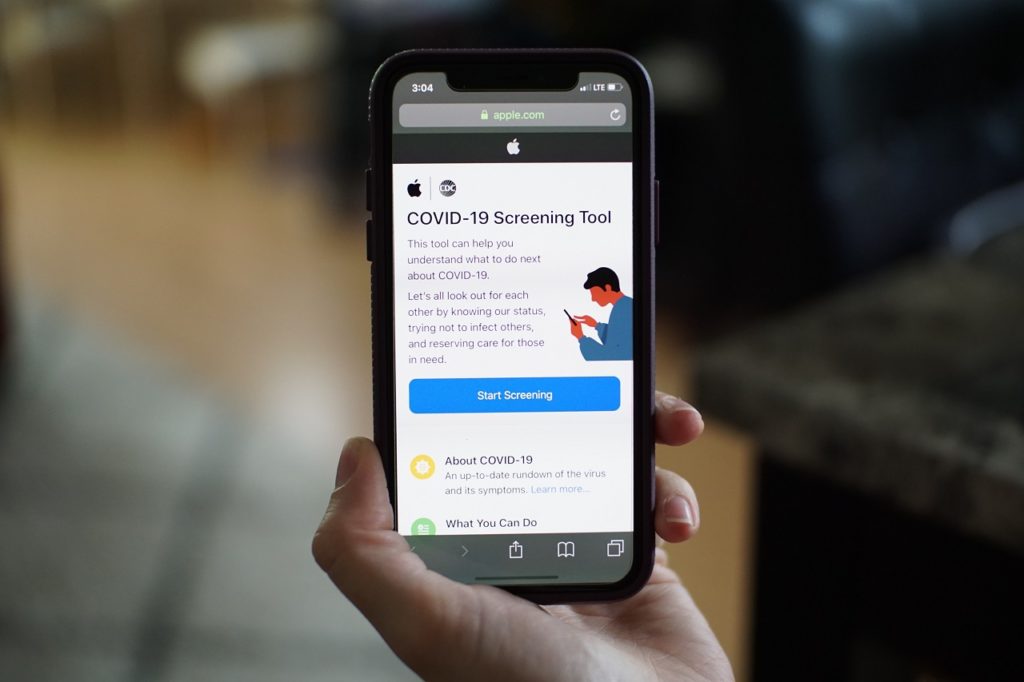What is telehealth? Imagine if your physician made a house call but didn’t physically have to be inside your home to treat you. That’s precisely what it is. You can think of it as a virtual consultation. A Zoom-call, if you will, with your doctor.
Contrary to what you might think, the concept of virtual doctor consultation isn’t new. It’s been around for a while now. The only difference is it has become necessary given the stay-at-home directives fueled by the COVID-19 pandemic.
So, how does telehealth work? And what are the state laws that govern telehealth services in the country? Here’s everything you need to know about it.
What Is Telehealth?
Telehealth is an all-encompassing term that refers to the delivery of health care, health information, and health education services through remote digital technologies. The most common of these include live video conferencing, remote patient monitoring, and mobile health apps.
Now, you might be wondering what the difference between telehealth and telemedicine is. While the two terms might sound similar and are often used interchangeably, telehealth encapsulates a much wider range of digital healthcare services. To better understand this, let’s first look at the definition of telemedicine.
What Is Telemedicine?
Telemedicine refers to the use of digital technologies to administer healthcare services to individuals who are geographically separated from their respective providers. So, a radiologist, for instance, who’s in an entirely different county, may read and interpret the diagnostic imaging results a patient received at a hospital that doesn’t have a resident radiologist on call.

Another telemedicine example would be a physician in one location conducting a live video consultation with a patient in a different location, for a non-life-threatening ailment.
Telemedicine refers to the specific practice of medicine using remote technologies, whereas telehealth is the blanket term that covers all aspects of the healthcare system, conducted using telecommunications technology.
So, wearable devices that record and transmit a patient’s vitals, healthcare education, remote communication from one provider to another, and telemedicine itself, are all telehealth examples of activities that extend beyond the scope of remote clinical care.
Veterinary telemedicine is also a new emerging field in telehealth that is especially helpful for pet owners who live in remote locations.
How Does Telehealth Work?
Telehealth relies on several different kinds of technology for effective deployment. Let’s explore the four main ones.
1. mHealth
mHealth is short for mobile health. With more than 90 percent of Americans owning cell phones and over 75 percent of them with smartphones, it makes sense for healthcare providers to leverage mobile devices to increase access to care.
mHealth is a collective term for the healthcare applications that patients install on their mobile devices to allow them to monitor their health metrics, set reminders for medication, schedule appointments, keep track of their medication, and provide a means of sharing critical information on their progress with clinicians.
2. Video Conferencing
These technologies make use of video conferencing tools, high-resolution cameras, and video scopes to provide medical access to patients who can’t travel to the appointment destination.

Video conferencing has long been used to provide healthcare for military personnel deployed overseas, inmates in correctional facilities, and patients in rural locations who may find it difficult to access specialized healthcare services.
Now, given the existing stay-at-home directives resulting from the COVID-19 pandemic, it has become more popular than it was a few months ago.
3. Remote Patient Monitoring
Remote patient monitoring or RPM for short involves reporting, collecting, transmitting, and evaluating patient health data using wearables, smartphone apps, mobile devices, and internet-enabled computers.
A patient would use an electronic device to track and record their vitals such as cardiac stats, blood pressure, heart rhythms, respiratory rates, oxygen levels, blood glucose levels, and any other relevant metrics, and transmit this data to the clinician remotely.
4. Storage and Transmission Technologies
These capture, store, and transmit patient health information for asynchronous service delivery. So, X-rays, MRIs, CAT scans, videos, photos, and text-based patient information, are collected, compiled, and sent to healthcare specialists for evaluation.
One they’ve reviewed all the data; they are better poised to develop a comprehensive treatment plan. The telehealth technologies used for storage and transmission are typically secure routers and servers. Email platforms are commonly used for this as well.
Pros and Cons of Telehealth
While telehealth does bring with it obvious benefits, it also has its fair share of drawbacks. Let’s examine some of the pros and cons of telehealth for both patients and doctors alike.

Pros
- Advances a consumer-based business model – Clinicians and other healthcare providers can now expand their patient base beyond the physical institutions they work in. This allows them to create better and more convenient business models aligned to their patients’ needs.
- RPM improves patient engagement – Telehealth is proving to be quite effective in reporting patient metrics right from the comfort of the patient’s own home. This is particularly important in teaching and encouraging self-care between hospital visits among individuals suffering from chronic conditions.
- More patients have access to healthcare – With the ever-rising physician shortage in the country, telehealth helps to stretch out the provider networks to reach more people, particularly those who fall outside the scope of the normal care delivery channels.
- Enhances clinical workflow efficiency – By triaging each case, prioritizing care delivery, and improving data capture, storage, and communication for better medical decision-making, telehealth has proven to be quite effective in increasing practice efficiency and patient satisfaction scores.
- Increases the practice’s bottom line – By reducing the overhead costs and time constraints associated with each visit for both the patient and the provider, telehealth allows physicians to extend their working hours, therefore, capturing more billable time.
Since the cost of telehealth visits is much less than conventional on-site visits, and the applications are much cheaper to deploy compared to full-blown hospital appointments, this reduces the overall practice overheads. This, in turn, has a positive impact on the revenue generated by the practice.
Cons
- Industry regulation – Telehealth regulations vary from one state to the next, and in many cases, are quite hard to decipher if you don’t have a legal background. Because of this, many providers are not aware of the telehealth regulations in their state, with some tools falling in the gray area of privacy and security.
- Limited physical examination – For some physicians and other healthcare providers, a live video conference may not be enough to diagnose and treat a patient. Some physicians may prefer to conduct a physical examination on their patients before starting them off on a treatment course.
- Equipment and technological constraints – Telehealth relies on software and hardware, all of which can be quite costly to acquire. Not to mention the cost of training the existing personnel on how to use the technology, as well as hiring additional IT staff.
HIPAA Guidelines for Telehealth
The 1996 Health Insurance Portability and Accountability Act (HIPAA) is a federal law that allows American workers and their families to continue to enjoy health insurance coverage when they change jobs.
The HIPAA law was designed to minimize the number of healthcare fraud and abuse cases by setting out industry-wide guidelines and standards for healthcare information and processes.

The Act also compels healthcare providers to handle patient health information in a manner that doesn’t compromise the patient’s privacy and the security of their information. This particular provision is highly relevant to telehealth. Here’s how.
The very same requirements for patient privacy, confidentiality, and information security that apply for in-person patient visits, are equally relevant for virtual visits conducted over video conference. It is the provider’s responsibility to protect all patient information.
It is for this precise reason that commercial-grade video conferencing tools like Facetime, Zoom, and Skype, do not support what would be termed as HIPAA-compliant video conferencing. These should, therefore, never be used for any purpose that would require the use of protected health information.
HIPAA Compliance Requirements
HIPAA compliance calls for the use of telehealth technologies that satisfy the following two criteria.
- It needs to provide fully encrypted data transmission
- It should not have any video storage features embedded in it
The technology service provider in question also needs to be willing to enter into a business associate agreement.
If you’re a patient using any kind of telehealth service, ensure that you ask the provider how your information will be protected during the remote healthcare encounter. That way, you know that your data is safe and secure during the session and after it concludes.
Telehealth Laws by State 2020
Although many states have come a long way to foster the provision of telehealth services, they still have a long way to go to ensure that virtual and remote healthcare services are reimbursed by insurance providers at the same level as in-person visits.
So far, there are only 10 states that require individuals to have a health plan in place to cover the cost of services delivered remotely, as it would if they received the same care in-person. This is known as payment parity.
The current law sets a payment parity baseline, although insurers and providers can negotiate for different rates above or below it. The 10 states that provide parity are:
- Virginia
- Utah
- New Mexico
- Missouri
- Minnesota
- Kentucky
- Hawaii
- Georgia
- Delaware
- Arkansas
Here’s why payment parity law is important. If it didn’t exist, health insurers could unilaterally decide to reimburse telehealth providers at 50 percent of what they would ordinarily receive for an identical in-person patient visit. The other issue that would potentially arise would be how the health plan would define a “telehealth service.”

Without the law, insurers may only refer to licensed physician services, completely overlooking the software, hardware, and other emerging technologies required to provide virtual healthcare services.
States That Have Enacted Telehealth Laws
Overall, 42 states and the District of Columbia have enacted laws that regulate telehealth and insurance service providers, with the spirit of the laws being to make healthcare more affordable and accessible to all, especially those living in rural America.
However, whether or not these laws are effective (in some states) is a whole other ball game. Case in point: Michigan, Massachusetts, Illinois, and Florida. These four states all have telehealth coverage laws in place. However, they don’t compel insurers to cover healthcare services delivered remotely via telehealth technologies.
Some states still don’t have any telehealth commercial insurance laws in place. These include:
- Wyoming
- Wisconsin
- West Virginia
- South Carolina
- Pennsylvania
- North Carolina
- Idaho
- Alabama
To be fair, Pennsylvania has been trying to pass a telehealth coverage law. Still, these efforts have been slowed down by state legislators attempting to attach abortion restrictions to the Bill.
Scope of Telehealth
In some states, the language used in the telehealth statutes is often limiting. For instance, a law may compel insurers to provide coverage for the same range of healthcare services deployed via telehealth in the same way they would during in-person patient visits. In such a case, you can tell that the intention of the law was noble, but the execution – well, not so much.
A law with that language expressly excludes RPM, since it is not technically a service that’s delivered in person. Some states have gone ahead to enact follow-up legislation to expand the scope of what constitutes virtual care, which in this case, also includes RPM. Mississippi, Virginia, New Mexico, Georgia, and Connecticut are just a few of the states that have taken steps to do this.
Twenty-four other states mandate coverage for what would be termed as “store and transmit” telehealth. So, healthcare services delivered without real-time doctor-patient communication would also be eligible for reimbursement.
For a more in-depth analysis of telehealth laws by state, check out the 50-State Survey of Telehealth Commercial Payer Statuses from Foley & Lardner.
When in Doubt, Consult an Attorney
Telehealth has certainly made it easier for individuals to access healthcare remotely. However, the laws governing reimbursement by insurance providers still have a long way to go in some states.
If you’re wondering whether your health plan covers telehealth services, or whether you’ll get reimbursed for providing telehealth services at payment parity baselines, get in touch with an insurance law attorney to help you understand what the laws in your state have to say about it.
If you have any legal questions concerning telehealth laws, chat online with a Laws101.com attorney.
